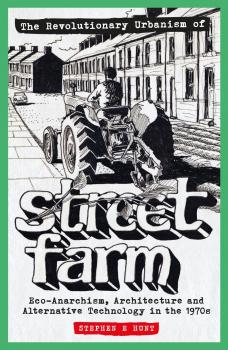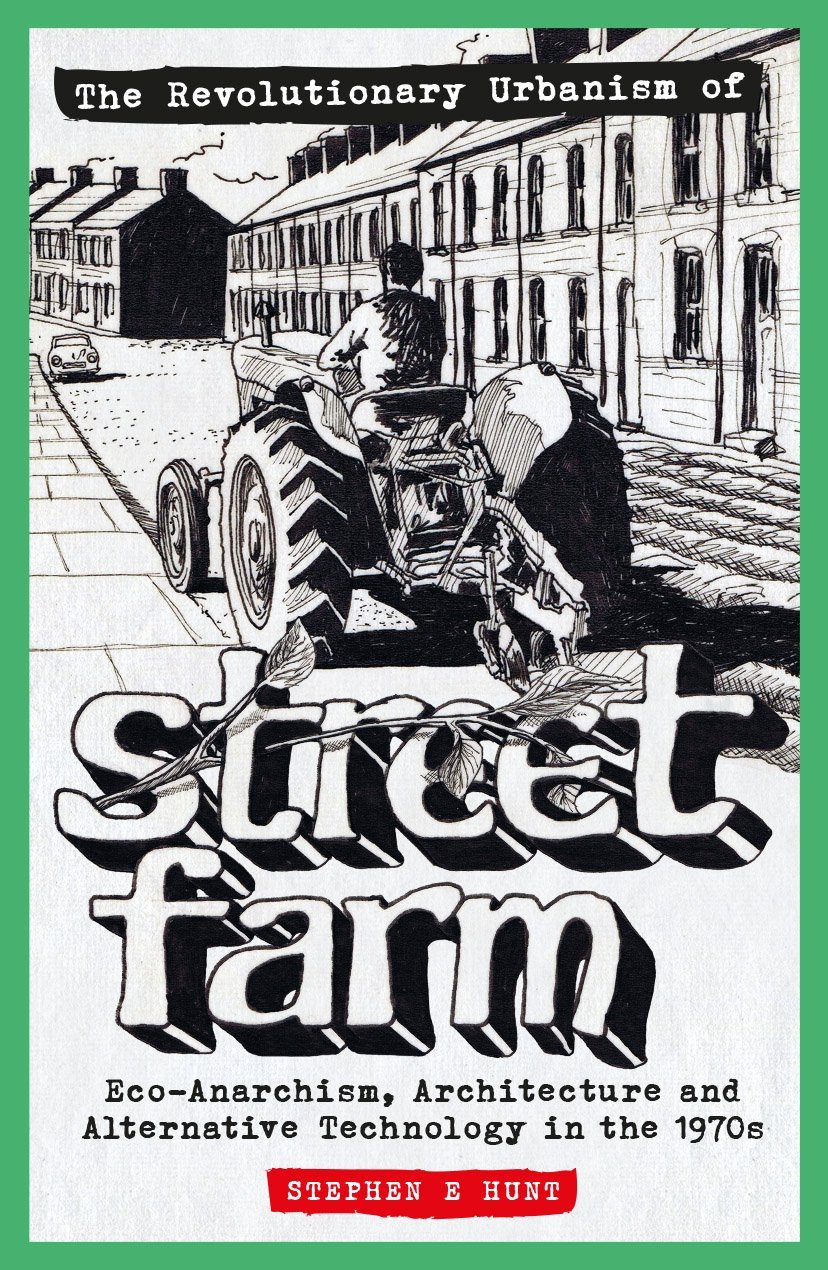
Featuring a tractor ploughing up the tarmac road of a terraced street, the cover gives you the impression you’re opening a book for the next ‘back to the land’ generation. Not so.
Instead we are offered something far more encompassing: a comprehensive account of the revolutionary politics of Street Farm (SF), a collective founded by three British architect friends (Graham Caine, Peter Crump and Bruce Haggart) in the 1970s.
A visionary ensemble strongly influenced by the Situationists, they viewed urbanism as wedded to a capitalist ideology that not only generated ecological crisis but also a crisis of alienation, politically and socially, in society at large.
In its place, they proposed ‘revolutionary urbanism’: a positive holistic vision involving self-determination, community architecture, self-sufficiency, autonomous homes, sustainability, co-operation and the feeding of the imagination through creative publications and performance art.
Their blending of the social with the environmental, Hunt argues, illustrates how revolutionary and forward thinking SF was. Indeed, many of the issues that they targeted – car dominance, the hierarchy of design (where only those with means can afford new buildings), and the urban/rural divide – remain as significant today, if not more so.
Contemporary London is a glaring example where new builds have become an investment playground for the global elite while working Londoners live under the threat of eviction.
SF was innovative in crossing the academic with the countercultural. Imagine a huge hydraulic grass-seeding cannon that would enable you to grow your own graffitti. Or donning scarecrow masks to ‘scare-cars’ at a pre-Reclaim the Streets demo against the tyranny of the car.
Disliking the linear and the boring – and favouring diversity and practicality – their magazines were loose sheets of paper that could be read in any order. Though everything was underlined by a deep commitment to social change, they were both playful and artistic.
One chapter is dedicated to the Street Farmhouse, designed by Graham Caine, which exemplified the SF approach. Built in 1972, it was the first eco house: a cheap, affordable, self build. It was off-grid (unconnected to mains electricity, gas or water), recycled its waste using an anaerobic digester, and promoted organic vegetable production. Combining living ecologically with living in an autonomous house no longer dependent upon external energy and food supplies, it was a building with far-reaching social and political implications.
While Hunt is thorough in situating SF within a wider radical history, at times this can lead to the account lacking pace. Nonetheless, it is a valuable resource.
At one point Haggart is quoted as saying: ‘better to become entertainers, jesters, clowns.... Not planning men, but stirring their imagination’. It’s this stirring of the imagination that is a potent tool for social change – one Street Farm encompassed and one those of us striving for social change today should note and learn from.


